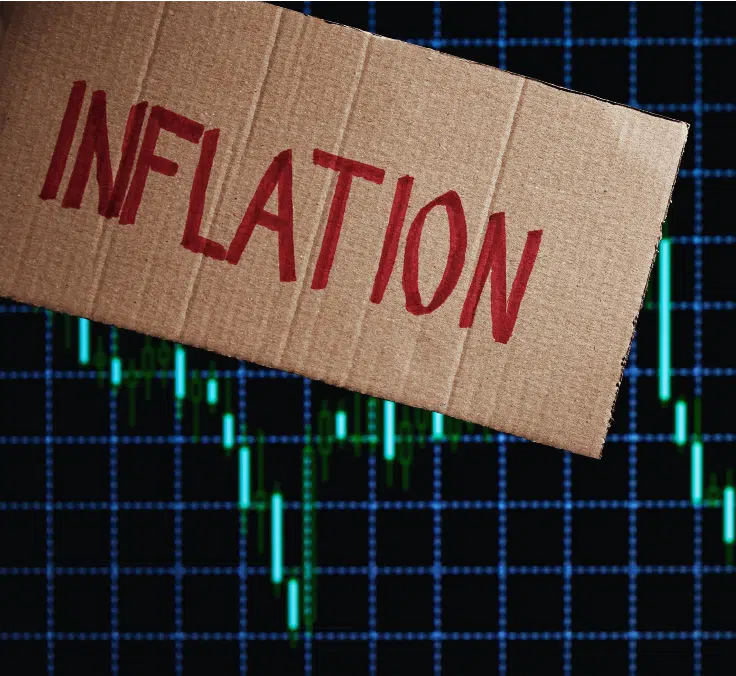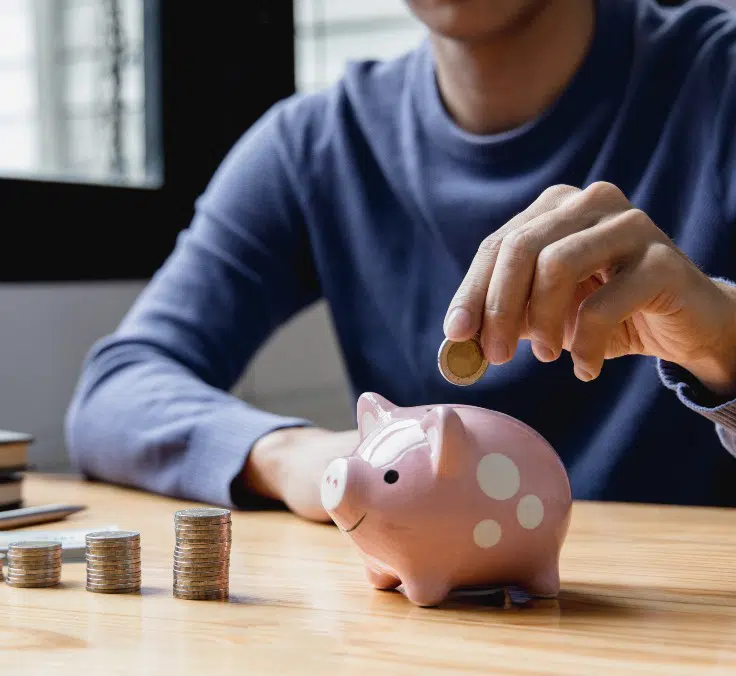ECONOMY| 19.05.2022
How to save in a context of high inflation
“The quickest way to double your money is to fold it in half and put it back in your pocket.” This seems like a quotation that could be attributed to many well-known economists such as Irving Fisher (with his theory of intertemporal choice) or John Maynard Keynes (and the paradox of thrift). However, it is actually the actor Will Rogers who is credited with making this humorous statement, which he did as a way of helping his fellow Americans understand the importance of saving, and the value of money, during difficult times. In our current context, with inflation at levels not seen in the last 40 years (7.4% in the eurozone, and 8.3% in the USA), saving might seem like a hopeless task.
But how long has the concept of saving existed? It should be remembered that back in the days of antiquity, people such as the Inca, Chinese, and Egyptians tended to save a portion of their harvests so they could be used during times of greater need. Our modern concept of savings, however, has its origin in Italy, with the first Savings Organization created by a group of Franciscan monks, as a way to protect the assets of the organization’s members. Those resources were derived from deposits, donations, or assistance from the Crown. When these amounts were insufficient, the practice of charging interest to the contributors was developed, and in this way, the initial foundations were created for banks and savings institutions. And the rest is history.
Saving has always gone hand-in-hand with fears of inflation. According to the European Central Bank, inflation exists “when there is an increase in prices not just for individual goods, but in general. The result is that a euro spent today buys less than it did yesterday in terms of goods and services”. It is also well known that inflation reduces the value of money, which is why it represents a constant threat to savings. For example, the real benchmark interest rate (nominal rate minus inflation) is currently negative, which is something that really harms consumer purchasing power. Since 2021, supply chain problems and increasing costs for energy and raw materials have been driving prices upward.
The impact that inflation has on Spanish term deposits is especially significant because of their conservative nature. According to data from the Bank of Spain, almost one trillion of the 2.3 trillion euros representing the wealth of families in our country is held in term deposits or in cash.
If there are problems, there must be solutions
Factors such as those mentioned above, combined with the war in Ukraine as an additional aggravating factor, are putting at risk the sustainability of a system that was still recovering from the pandemic. In a context filled with uncertainty, the increasing price of the basket of goods and services used to measure inflation has led many people to look for ways to protect themselves against inflation that is likely to continue to be unpredictable in coming months.
The good news is that there are some approaches that can be adopted by savers looking for a safe harbor, as useful alternatives that can prevent their money from losing even more value.
Make a budget to plan your spending
Transportation, electricity, and food were the three groups of expenses that experienced the sharpest price increases in 2021, and according to Spain’s National Statistical Institute (INE), 70% of household budgeting was dedicated to them.
This is why one of the most important decisions you can make here is creating a budget, which can be used to establish some maximum spending limits. You should also monitor the purchases you make throughout the month, and postpone any spending that is less of a priority (such as buying a new car, for example).
It is also important to control how much you spend on the water and electricity you use at home. For electricity, a key thing to be aware of are the ranges of hours when the rates charged per kW/h are lower, which can help prevent unpleasant surprises when your bill arrives.
What is the 50-30-20 rule?
In relation to budgeting, the 50-30-20 rule is a useful approach for controlling spending and preventing inflation from having a larger impact than expected. Elizabeth Warren, a bankruptcy law expert and former Harvard University professor who is now a United States Senator, was the first to describe this method that can help us manage the amounts we should be allocating to our monthly spending and savings: 50% on needs, 30% on wants, and 20% for savings.
Compare prices for different goods (and at different stores too)
The rising consumer price index (CPI) seen during recent months has not just affected electricity and the price of fuel. Higher prices for goods in general have been reflected at the supermarket chains: according to a recent report from the Organization of Spanish Consumers (OCU), prices increased by 9.4% on average during the last year, corresponding closely to the inflation recorded in Spain (8.4%, after dropping 1.4 percentage points compared to the previous month).
Specifically, since the beginning of the pandemic, sunflower oil, olive oil, and pasta are some of the products from the basic consumer basket whose prices have risen the most. However, since the start of the conflict in eastern Europe, supermarket prices have been subject to an additional upward push, and according to the INE, in just a couple of months prices for products such as those mentioned above have increased by more than 20%, or more than 30% in the case of the oils.
This means that when making a shopping list, it is a good idea to review the supermarket prices for the products you plan to purchase, one-by-one, and to compare brands and supermarket chains (also focusing on a store’s “own-brand” products, which tend to have lower prices).
Buying foods in bulk
The increasing consumption levels seen during recent decades represent one of the most significant challenges in relation to combating climate change. In fact, a study performed by a group of North American universities concluded that consumerism is responsible for 60% of all global greenhouse gas emissions. As part of this impact, they emphasize the role of meat products (producing around 60% of the global greenhouse gas emissions associated with food production), and the impact of food production systems in general (currently responsible for 80% of deforestation).
Problems with freight transport, and the supply chain disruptions they have caused, have led consumers to look for new forms of consumption that are not only less expensive, but also more environmentally responsible.
Buying foods in bulk has become an increasingly popular choice for many individuals. Purchasing fresh products sold by weight not only reduces their ecological footprint (less packaging and less wasted food), it is also a more economical alternative that can give families a little extra breathing room financially.
Paying in cash
Using cards to pay for the things we buy, or even using our phones, has become a typical practice, especially among the younger generations. Before the pandemic, 87% of payments at points of sale were made in cash. Now, just two years later, 79% of Spain’s population frequently uses some form of electronic payment, according to the OCU.
During the last few years, various regulatory bodies have made significant progress in reducing the size of the underground economy, which continues to pose a problem in western countries, especially in Spain where 24% of the GDP is affected (compared to the European average of 13%). Nevertheless, and as explained by the European Central Bank in a recent report, making payments in cash is still an approach that “makes it easier for payers to control their spending”.
Rotation towards investment. What are the options?
In early 1995, the inflation rate was at 5%, while the interest rate on Spanish 5-year Public Debt was over 10%. Hedging against price levels was clearly defined. However, more than 25 years later, the current situation is quite different: the 5-year interest rate is at 1.30%, and the most recent data put the CPI at 8.4%.
In light of skyrocketing prices, shifting attention to the world of investments could become an option for saving. According to Daniel Sancho, head of investments at MAPFRE Gestión Patrimonial, the only way to hedge against inflation is to “seek out the service of a professional advisor who can help you build a diversified fund portfolio, with dynamic management that adapts to the different market scenarios, always with a long-term objective.”
The expert says that the companies that the funds invest in must be “sustainable businesses over time, with competitive edges, the ability to set prices and capable of transferring price increases to the business without reducing profits.”
RELATED ARTICLES:



